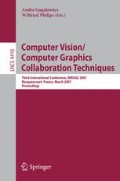Abstract
Virtual Reality techniques were used to develop educational didactic models in the area of Civil Engineering. The visualization of the distinct physical steps of a construction is shown in the virtual applications here presented. The developed models bring new perspectives in the teaching activity as a support to expose new curricular programmes or complex sequence construction. In order to obtain models, which would be able to visually simulate the geometric evolution of the construction activity, techniques of geometric modelling and virtual reality were used. The models make it possible to view the physical evolution of the work, to follow the planned construction sequence and to visualize details of the form of every component of the works. They also support the study of the type and method of operation of the equipment necessary for these construction procedures. These models have been used to distinct advantage as educational aids in first-degree courses in Civil Engineering.
Access this chapter
Tax calculation will be finalised at checkout
Purchases are for personal use only
Preview
Unable to display preview. Download preview PDF.
References
Leinonen, J., Kähkönen, K., Retik, A.: New construction management practice based on the virtual reality technology. In: Issa, R.R.A., Flood, I., O’Brien, W. (eds.) 4D CAD and Visualization in Construction: Developments and Applications, pp. 75–100. A.A. Balkema, Leiden (2003)
Liston, K., Fischer, M., Winograd, T.: Focused sharing of information for multi-disciplinary decision making by project teams. ITcon 6, 69–82 (2001)
Sampaio, A., et al.: Project program report: Automatically generating model of the graphic representation of bridges, POCTI/1999/ECM/ 36328, ICIST/FCT, Lisbon, Portugal (1999)
Henriques, P., et al.: Project program report: Virtual reality in optimization of construction project planning, POCTI/1999/ECM/ 36300, ICIST/FCT, Lisbon, Portugal (1999)
Sampaio, A., Henriques, P., Studer, P.: A virtual environment tool applied to visualize construction processes. In: Proceeding of TP.CG.04 – Theory and Practice of Computer Graphics 2004 Conference, Bournemouth, U.K., pp. 78–85 (2004)
Introduction to working in EON Studio. EON Reality, Inc. (2003)
Sampaio, A.: Definition of a bridge deck geometrical modelling process to automate design graphical representations. In: Proceeding of IKM 16th International Conference on the Applications of Computer Science and Mathematics in Architecture and Civil Engineering, Weimar, Germany, p. 62 (2003)
Graphical documentation of the design of North Viaduct of the Quinta Bridge - 1st phase. GRID Planning office, Lisbon (1995)
Author information
Authors and Affiliations
Editor information
Rights and permissions
Copyright information
© 2007 Springer Berlin Heidelberg
About this paper
Cite this paper
Sampaio, A.Z., Henriques, P.G. (2007). Virtual Reality Technology Used to Develop Didactic Models. In: Gagalowicz, A., Philips, W. (eds) Computer Vision/Computer Graphics Collaboration Techniques. MIRAGE 2007. Lecture Notes in Computer Science, vol 4418. Springer, Berlin, Heidelberg. https://doi.org/10.1007/978-3-540-71457-6_16
Download citation
DOI: https://doi.org/10.1007/978-3-540-71457-6_16
Publisher Name: Springer, Berlin, Heidelberg
Print ISBN: 978-3-540-71456-9
Online ISBN: 978-3-540-71457-6
eBook Packages: Computer ScienceComputer Science (R0)

